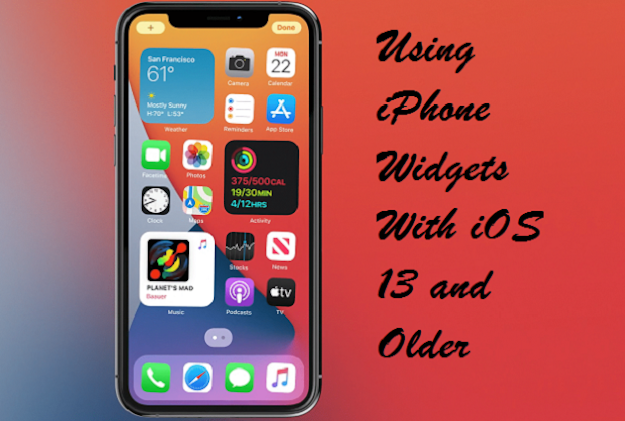- Swipe from the top of the screen to the bottom.
- If the widgets do not appear, swipe to the right window.
A Guide on Using Widgets on Your iPhone
Some widgets enable you to take a glance at the activities carried out by an app, while some applications let you execute changes without opening them.
The steps to use widgets on your iPhone are:
- Swipe right to open the Widgets window from your home screen or lock screen. Else, swipe top to bottom to access the notification center, and then swipe right.
- Locate the widget you want to obtain information from.
- Hit the action you want to perform, and you’ll be taken to the next window. Note that many widgets allow you to remain on the widget screen.
- Click on the ‘Show More’ or ‘Show Less’ icon to view more information about the widget.
How to add Widgets from the App Store?
Apple offers you in-built options for adding widgets, but you can use third-party developers for the same. The steps to add widgets from the App Store are:
- Go to the widget’s window by swiping right.
- Click on the ‘Edit’ option on the bottom of the screen.
- A list of applications will appear in the next window. All the recently downloaded apps from the App Store appear at the top of the list with a blue dot present next to it.
- Hit the ‘+’ icon next to the application name that you want to add to the widgets section.
- Once you select the apps to be added, tap on the ‘Done’ option on the top-right corner of the screen.
iOS 10 introduced a new method of adding widgets and the steps for the same are:
- Locate the application on the home screen for which you want to add a widget.
- Press and hold the icon until the icons start jiggling.
- A pop-up menu of the application will appear. Tap on the ‘Add Widget’ option that’ll appear on the top-right of the menu.
Other Actions That Can Be Performed
Apart from adding widgets, there are other actions that you can perform, such as rearranging and disabling widgets.
Rearranging the Widgets
You can rearrange widgets to a new location once you add them to the window. The steps to rearrange widgets are:
- Go to the Widgets window.
- Click on the ‘Edit’ option on the bottom of the screen.
- A list of widgets will appear. Tap and hold on the three-lined icon next to the application name, and drag it to arrange at your convenience.
Disabling the Widgets
You can choose to remove a widget that is no longer required on the widget window or you don’t use often. The steps to disable or remove a widget are as follows.
- Go to the Widgets window.
- Click on the ‘Edit’ option on the bottom of the screen.
- A list of widgets will appear. Hit the ‘Minus’ (-) icon next to the app name you want to remove and then click on the ‘Remove’ option.
- Once you remove the apps, click on the ‘Done’ button on the top-right.
Widgets are extremely useful when it comes to using shortcuts to view information. You can add as many applications to the widget window as you like, as long as the app supports the feature. However, it might not be of much use to many people, and thus, you can choose to disable the option.
SOURCE:- Using iPhone Widgets With iOS 13 and Older

Comments
Post a Comment